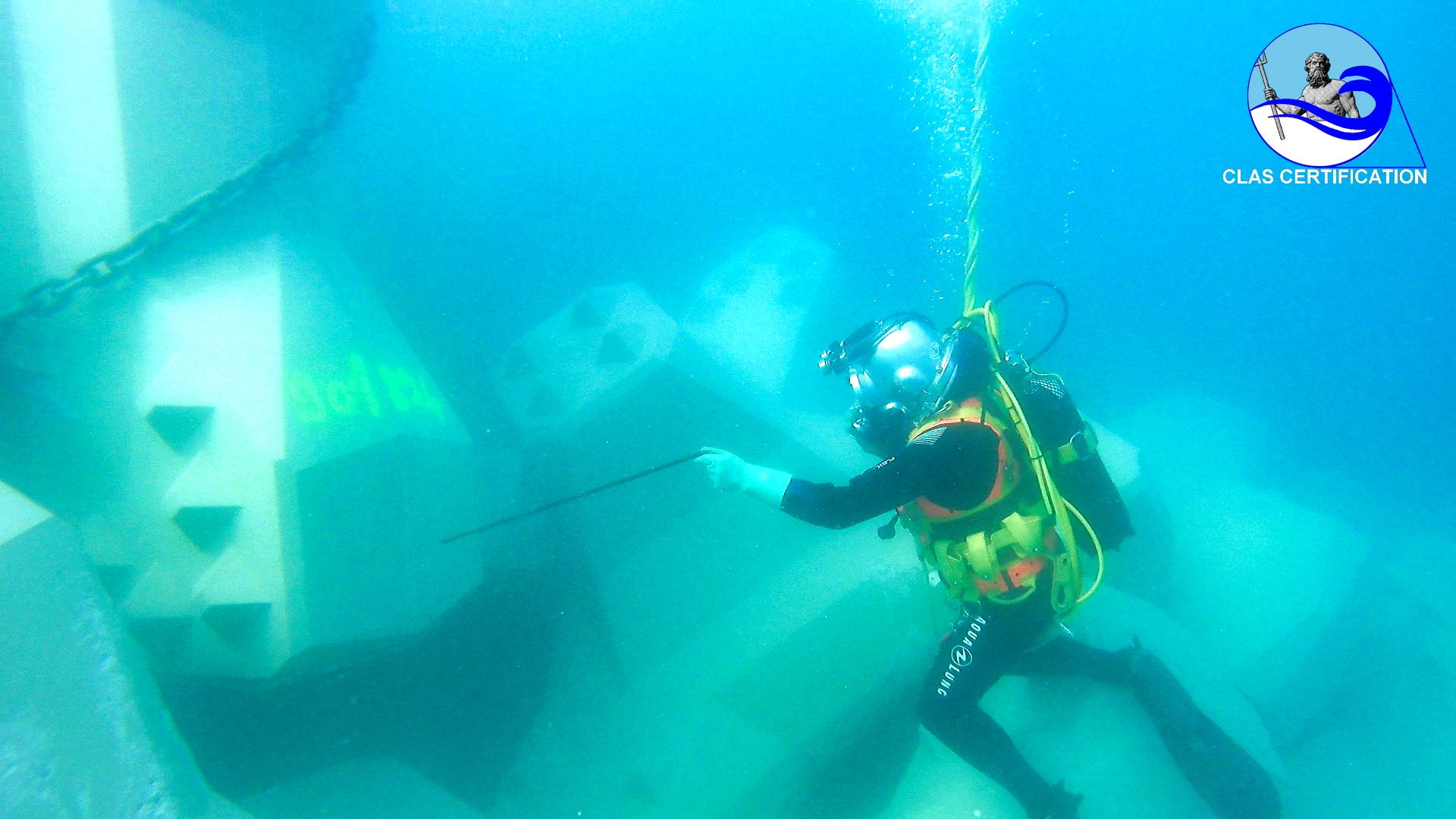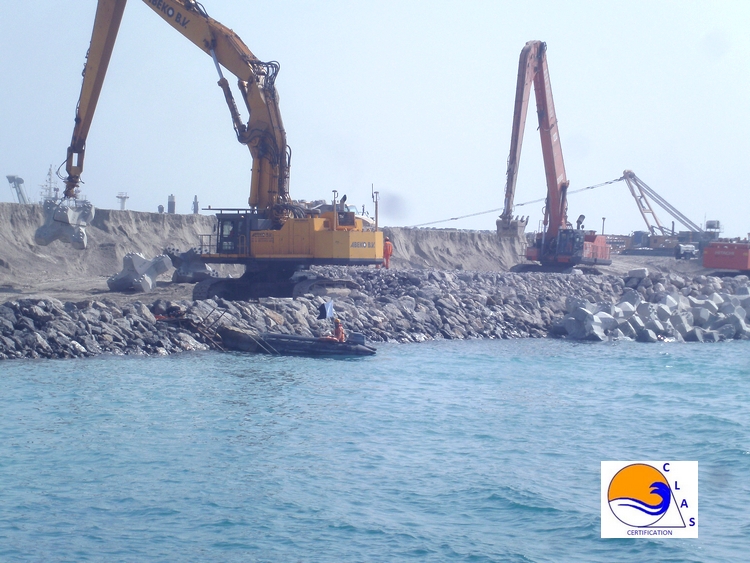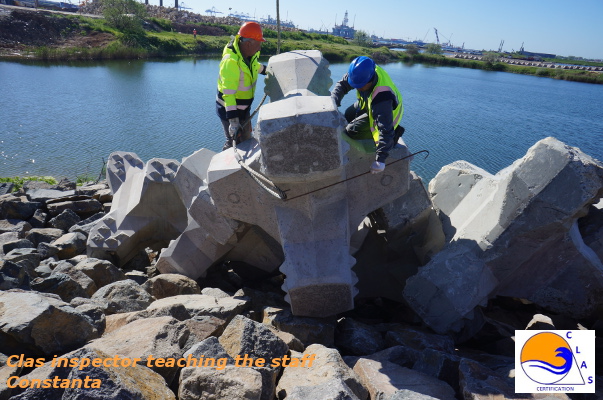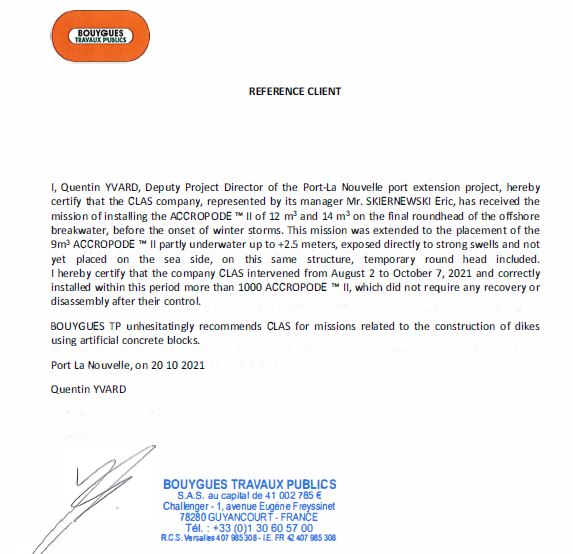PRESENTATION OF THE ACCROPODE™II BLOCK




The ACCROPODE™II was patented in 1999 :
The ACCROPODE™II brand belongs to the company ARTELIA, it is marketed by the company CLI.
The ACCROPODE™II differs from the first generation of ACCROPODE™ by the removal of the anvils and the reduction in the thickness of concrete between the legs.
ACCROPODE™ ACCROPODE™II

ACCROPODE™ ACCROPODE™II

From experience we have found that this new design makes it a little easier to install but also probably more fragile than the first generation of ACCROPODE™ due to its slimmer shape. In the event of a sudden movement, it will more easily tend to break at the level of the legs. The interlocking of this block must therefore be perfect to avoid any risk of movement after installation. Properly interlocked and without freedom of movement, it will not pose any problem of installation, since one avoids the violent movements during the operations of installation.
LEGAL STATUS OF THE ACCROPODE™II
The ACCROPODE™II was patented more than twenty years ago.
The ACCROPODE™II has fallen into the public domain.
PLACEMENT OF THE ACCROPODE™II
The relative fragility of this block at the level of the legs, imposes a perfect interlocking which will prohibit any movement after installation. Contacts with the ACCROPODE™II of the lower row must be established with solid support. The main obstacle to this good interlocking is due to the attachment of the ACCROPODE™II on the rocks of the underlayer which stops the movement to descend from the block. The only way to overcome this constant problem is to visually ensure that the ACCROPODE™II is in its final interlocking position. A natural pose will lead by searching for the theoretical target will lead to poor interlocking and the ACCROPODE™II thus posed will still have the possibility of descending further under the action of its weight and/or the sea.
Changing the orientation of the blocks does not completely eliminate this problem. Only a visual inspection of each block when it is adjusted between the two ACCROPODE™II of the lower row allows this, subject to mastering the principle of nesting and the inspection procedures.
Aspect of the ACCROPODE™II armour properly built
Underwater the supports with the lower row are well established. There are no contact faults.

Near the surface, there is still a strong interlocking of the blocks with firm support on the ACCROPODE™II of the lower row and strong locking by the ACCROPODE™II of the upper row.

On and under water the orientations of the blocks are varied. No ACCROPODE™II can descend or oscillate. There are no holes. There is no out of profile ACCROPODE™II.

MAIN INSTALLATION DEFECTS WITH THE ACCROPODE™II
,
ACCROPODE™II out of profile

Possible origin
Fault in the underlay, insufficient training for installation teams, installation error, ineffective installation control.
Risk
An ACCROPODE™II out of profile can be extracted by a strong swell. In its fall it risks breaking the ACCROPODE™II underneath and its extraction will cause a large hole. A single out-of-profile ACCROPODE™II that is extracted can initiate a breakdown of the armour in the area concerned and lead to major disorder.
Required action
Dismantle the area and fit the ACCROPODE™II correctly. If the origin of the non-compliance is a defect in the underlay, the underlay must be adjusted before refitting the ACCROPODE™II.
ACCROPODE™II placed in columns

Column mounting is not indicated as a non-conformity in the technical reference published by the license seller. The reference system mentions compliance with the diamond mesh and tolerates occasional deviations. However, we have found that mounting ACCROPODE™II in columns produces movements and breakage and must be rectified. That's why we mention it.
Possible origin
The technical reference of the license seller authorizes the occasional non-compliance with the laying mesh and this favors the appearance of this type of problem. However, it is also indicated that the ACCROPODE™II must be interlocked together and not have any freedom of movement. The assembly in columns of ACCROPODE™II which have freedom of movement is attributable to the insufficient training of the installation teams, an error in installation, ineffective control of the installation.
Risk
ACCROPODE™II mounted in columns are generally unstable and do not have good support with the lower row. They are generally not correctly blocked by the ACCROPODE™II of the higher rank. They will move and probably break. If they break the area will start to unravel and will need to be rebuilt.
Required action
Normally the area mounted in columns should be dismantled and these ACCROPODE™II correctly positioned respecting the laying mesh. CLAS has know-how that allows this type of non-conformity to be resolved without dismantling the ACCROPODE™II above, in the majority of cases.
ACCROPODE™II not well interlocked

Possible origin
A badly interlocked ACCROPODE™II generally remained attached to a rockfill on the slope and did not descend into its final interlocked position. This concerns about 40% of ACCROPODE™II placed "naturally" on the target position. The cause is attributable to the insufficient training of the installation teams, an error in installation, ineffective control of the installation.
Risk
Poorly interlocked ACCROPODE™II are unstable and do not have the correct supports between them. They will move and probably break. If they break the area will start to unravel and will need to be rebuilt.
Required action
Normally the area should be dismantled and these ACCROPODE™II correctly positioned, respecting the placing mesh and the strong support with the ACCROPODE™II of the lower row. CLAS has the know-how that makes it possible to resolve this type of non-conformity without dismantling the ACCROPODE™II above in the majority of cases.
Broken ACCROPODE™II

Possible origin
The quality of the concrete should be checked first. If the quality of the concrete is not in question, the origin is then linked to movement of the ACCROPODE™II due to poor interlocking during installation. The cause is then attributable to the insufficient training of the installation teams, an error in installation, ineffective control of the installation.
Risk
When the broken ACCROPODE™II no longer participate effectively in interlocking, the area begins to unravel and will have to be rebuilt.
Required action
The action required depends on the position of the broken ACCROPODE™II. For example, an ACCROPODE™II in the first row which has been broken by rocks on the toe mount, but which is firmly blocked, must not be replaced. If the broken ACCROPODE™II is in the middle of the armour and no longer participates in the interlocking of the zone, then the zone must be dismantled and the broken ACCROPODE™II replaced.
Holes

Possible origin
Insufficient training of installation teams, installation error, ineffective installation control.
Risk
The armourstones of the underlayer that we see can be split and extracted. The area risks moving, causing the breakage of ACCROPODE™II which will then initiate the unraveling of the shell.
Required action
It depends on the position of the hole. An isolated hole in an otherwise properly constructed area can be plugged using a bag of concrete, for example, provided that once placed the bag of concrete cannot be extracted. If this is not possible, or if the hole is close to the surface, the area must be dismantled and the ACCROPODE™II reinstalled correctly.
ACCROPODE™II placed with the nose on the slope only

This is not considered by the license seller as non-compliance, whereas it is for the first generation ACCROPODE™. However, on several occasions, we have observed breakage of ACCROPODE™II linked to this position, which generates nesting difficulties and movements after installation. That's why we mention it.
Possible origin
The technical reference published by the license seller authorizes this type of attitude for the ACCROPODE™II.
Risk
This type of positioning can cause movement and therefore breakage of ACCROPODE™II. The breakage of ACCROPODE™II initiates the progressive unraveling of the armour.
Required action
When this type of installation is detected, it is necessary to ensure that the surrounding interlocking is perfect and will not allow any movement, otherwise this ACCROPODE™II must be adjusted. Generally, the area must be dismantled and the ACCROPODE™II replaced. CLAS has the know-how that makes it possible to adjust this type of non-conformity without dismantling in the majority of cases.
Other less frequent installation defects may exist which will be explained to you by our inspectors
INSTALLATION SPEED WITH ACCROPODE™II
The placing rate depends on the following factors:
Block size: The bigger the block, the more difficult it is to move and the more likely it is to break in the event of an impact.
Placing machines: The hydraulic shovel allows a laying rate almost doubled compared to the cable crane, but its use is limited by the size of the blocks and the laying distance.
Quality of the underlayer: an underlayer that does not respect the tolerances and has significant roughness will slow down the installation and limit the possibilities of interlocking the blocks.
Quality of the training of the installation team: good theoretical and practical training which includes training in safety, the ACCROPODE™II technique and the gradual increase in the rate of installation, lasts approximately one month. It is not just training, it is an apprenticeship that obeys pedagogical rules and a progression that can only be taught by construction professionals.
Visibility: good visibility will facilitate visual inspection operations. The operator must be able to see the shell from the front, perpendicular to the surface of the slope, and receive information on the points of contact with the ACCROPODE™II of the lower row and with the slope. Only a diver can properly carry out these checks. In clear water it is very fast, in dirty water it is longer and requires advanced learning, especially in safety.
.jpg)
Installation tools used: There are three ways to install:
1 Divers, this is the fastest and most reliable system.

Installation tools used: There are three ways to install:
The seller of the ACCROPODE™II license recently wrote about this:
“A control by diver or camera allowing to see the interweaving of each block is necessary. It is essential that these checks take place regularly, several times a day if necessary. »
“Divers with cameras allow better nesting than any other system. »
Divers link.
2 The POSIBLOC™ is the system that we consider the slowest and the least reliable because it is based on the theoretical position of the block in x,y,z and not on the nesting, which is contrary the installation rules, which favor interlocking without tolerance limits in relation to the target. On the other hand, the system shows a virtual image to the operator which is often different from reality, due to the inaccuracy of the system.
The software uses colors to indicate to the operator whether the block is on target or not. The operator is trained to pose according to the correct nesting and not according to the target. He will therefore rely on the contacts shown by the software, while trying to respect the colors. Unfortunately the imprecision of the system does not allow to have a reliable representation of reality:
The blocks are in contact on the image provided by the software, they are not in reality.

Conversely here the blocks are not in contact on the image and are in reality.

POSIBLOC™ link.
3 The ECOSCOPE is an acoustic system which increases the rate of installation in dirty water but cannot dispense with diver control, because once the block is placed, the image does not allow not to appreciate the quality of the contacts with the ACCROPODE™II of the lower row, nor the interlocking and installation faults
.

Quality and frequency of installation checks: The longer the frequency of checks is delayed, the more one is exposed to major dismantling which will heavily penalize production. There is no point in giving yourself the means to install 10 ACCROPODE™II per hour if you have to dismantle 50% of them at the end of the day.
More than the hourly rate of installation, it is the frequency and the quality of the checks that will make it possible to achieve the production objectives. Very close controls, by divers, will make it possible to eliminate dismantling by limiting the processing of installation defects to real-time adjustments.
On the contrary, a multibeam sonar inspection after the installation of several rows will not allow all the installation defects to be seen and will require significant dismantling in the event of additional inspection by divers. In the event that only the multibeam is implemented, the quality of the construction cannot be certified in CLASS A. The durability of the structure cannot be guaranteed.
The average production in cable crane installation with divers trained by CLAS is 6 to 8 ACCROPODE™II per hour, approved.

The average production in hydraulic shovel installation with divers trained by CLAS is 12 to 15 ACCROPODE™II per hour, approved.
These statistics from site data include occasional dismantling.
OUR EXPERIENCE WITH THE ACCROPODE™II BLOCK
2010 MARCHICA MOROCCO

5,000 ACCROPODE™II from 2 to 5 m3
Assistance with the installation of ACCROPODE™II and certification on behalf of SOMAGEC.
Opinion of SOMAGEC on our service
Mail sent by Mr. Youssef ZAHIR Project Director, to CLI and IDMer (now CLAS)
“This very badly started project ended with full satisfaction and we have reconsidered our negative opinion about the ACCROPODE™. As long as we benefit from efficiency and quality of this level, we will not hesitate to offer the ACCROPODE™II as a variant for future projects.
To go in this direction we asked Mr. SKIERNIEWSKI to plan the training of a team of divers and technicians SOMAGEC so that our company remains the leader of maritime works in MOROCCO and acquires a reasonable autonomy on the techniques of installation of ACCROPODE™, complemented by a quality certification of that which has been implemented in Marchica. »
Marchica Construction Reference Link
Linkreference Marchica Certification
2010 Cerbere France

628 ACCROPODE™II of 9 m3.
Installation of ACCROPODE™II for the company GUINTOLI-NGE
Opinion of CLI on our service:
“A storm hit the unfinished work on October 10 but caused only minor disruption to the works and only a few days delay in the completion of the work, in particular thanks to the decision of the Contractor to 'hire an experienced diver for the installation of the shell'.
The "experienced diver" is actually the company IDMer, now CLAS, which brought in a laying team. We organized the site and carried out the installation of the ACCROPODE™II blocks ourselves in record time.
2012 ZAKUM ISLAND W ABU DHABI

43,000 ACCROPODE™II of 4 m3.
Assistance with the installation of ACCROPODE™II and certification for NMDC.
NMDC Comment:
Mail sent to IDMer which has become CLAS:
“I would like to thank you personally for the great contribution to the ZAKUM project with the placement of X-bloc ® and ACCROPODE™II and maintaining the good relationship during execution of the works, with all on site and the client as well.
IDMer really showed great professionalism during the execution of the project and contributed to the success we have achieved as 1 team”.
Reference link ZAKUM ISLAND W Construction
2012 ZAKUM ISLAND N ABU DHABI

40,000 ACCROPODE™II of 4 m3.
Assistance with the installation of ACCROPODE™II and certification for NMDC.
Comment from NMDC:
Mail sent to IDMer which has become CLAS:
“I would like to thank you personally for the great contribution to the ZAKUM project with the placement of X-bloc ® and ACCROPODE™II and maintaining the good relationship during execution of the works, with all on site and the client as well.
IDMer really showed great professionalism during the execution of the project and contributed to the success we have achieved as 1 team”.
Reference Link ZAKUM ISLAND N Construction
Reference link ZAUM ISLAND N Certification
2012 OSPEDALETTI ITALIE

ECOPODE™ 4 m3 : 730
ECOPODE™ 6 m3 : 1419
ECOPODE™ 8 m3 : 676
ACCROPODE™II 4 m3 : 354
ACCROPODE™II 6 m3 : 902
ACCROPODE™II 8 m3 : 611
Port expertise
OSPEDALETTI reference link
2014- 2015 CONSTANTA ROMANIA

7,000 ACCROPODE™II of 3 m3.
8,500 ACCROPODE™II of 9 m3.
1,000 ACCROPODE™II of 12 m3.
Assistance with the installation of ACCROPODE™II and certification for the van oord company.
Van oord's comment:
2015- 2019 KUANTAN NEW DEEP WATER TERMINAL MALAYSIA

8616 ACCROPODE™II of 2 m3.
52 153 ACCROPODE™II of 4 m3.
1,364 ACCROPODE™II of 5 m3.
Assistance with the installation of ACCROPODE™II and certification for the company IJM-CHEC JV and the client ECERDC
Comment from ECERDC:
Comment d’IJM-CHEC JV:
Link reference KUANTAN PORT Construction
Link reference KUANTAN PORT Expertise
Link reference KUANTAN PORT Certification
2018-2023 NOUVELLE ROUTE DU LITTORAL REUNION ISLAND FRANCE

ACCROPODE™ II 6 m3 = 3590 units.
ACCROPODE™ II 8 m3 = 9490 units.
ACCROPODE™ II 11 m3 = 6540 units.
The four breakwaters of the New Coastal Route showed breakage of ACCROPODE™II in an unusual proportion.
CLAS was commissioned by the engineer EGIS to carry out an assessment of the ACCROPODE™II armour, establish the causes of the breakage and establish a risk diagnosis of the structures.



CLAS inspectors conducted dive and drone inspections to research and establish the causes of the movements that caused the breakage of ACCROPODE™II.
The causes of the breakage have been established.
CLAS carried out a risk diagnosis with regard to market objectives.
Comment from EGIS
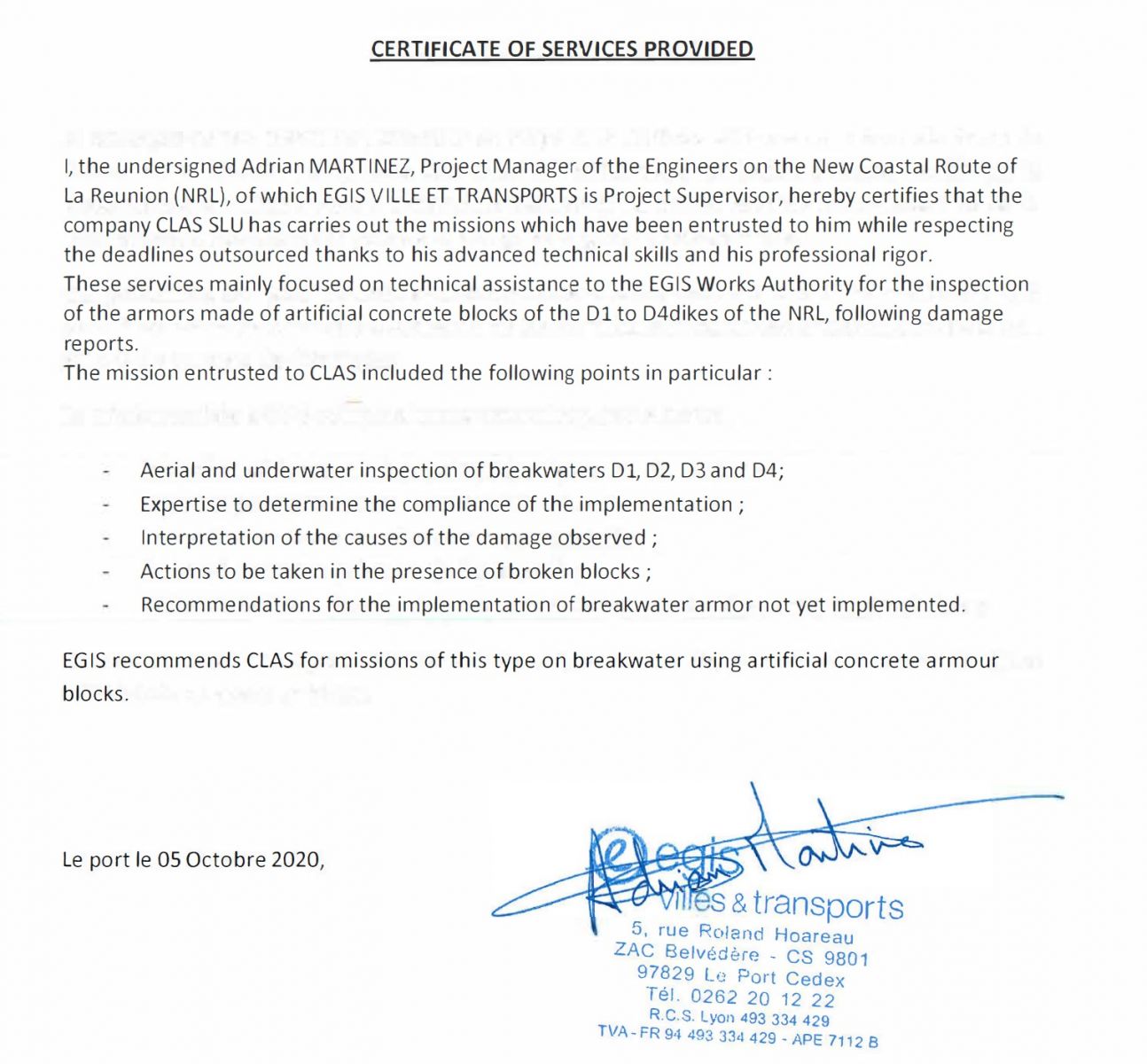
Link reference Nouvelle Route du Littoral
2021 PORT LA NOUVELLE FRANCE
.jpg)
ACCROPODE™ II 14 m3, 12 m3 and 9 m3: over a thousand units.
The offshore breakwater, whose armour was to be constructed with POSIBLOC™, has been destroyed three times by storms since construction began. It was necessary to develop procedures and a rapid installation technique in order to protect this structure. The BOUYGUES company called on the expertise of the CLAS company.
We have set up a high-performance installation team made up of two CLAS inspectors and an assistant. We have obtained COFRAC certification for the hyperbaric work structure. The POSIBLOC™ system was dismantled by BOUYGUES, we adapted new installation procedures. We proceeded to adjust the embankments and slope and to place the armor blocks.
.png)
.jpg)
.jpg)
In two months, the offshore breakwater was completely protected and all of the ACCROPODE™II installed by CLAS were approved without reservation by project manager ARTELIA.
.png)
2022 PORT LA NOUVELLE FRANCE

ACCROPODE™ II 9 m3, 4 m3 and ECOPODE™ 5 m3: plus two thousand units.
BOUYGIUES called on the expertise of CLAS to train its teams in placing out of the water, against the crowning wall of the offshore breakwater.

We were also asked to quickly build the shell of the South breakwater using ACCROPODE™II and ECOPODE™ blocks. In all, more than two thousand blocks were installed and approved without dismantling by the engineer ARTELIA.
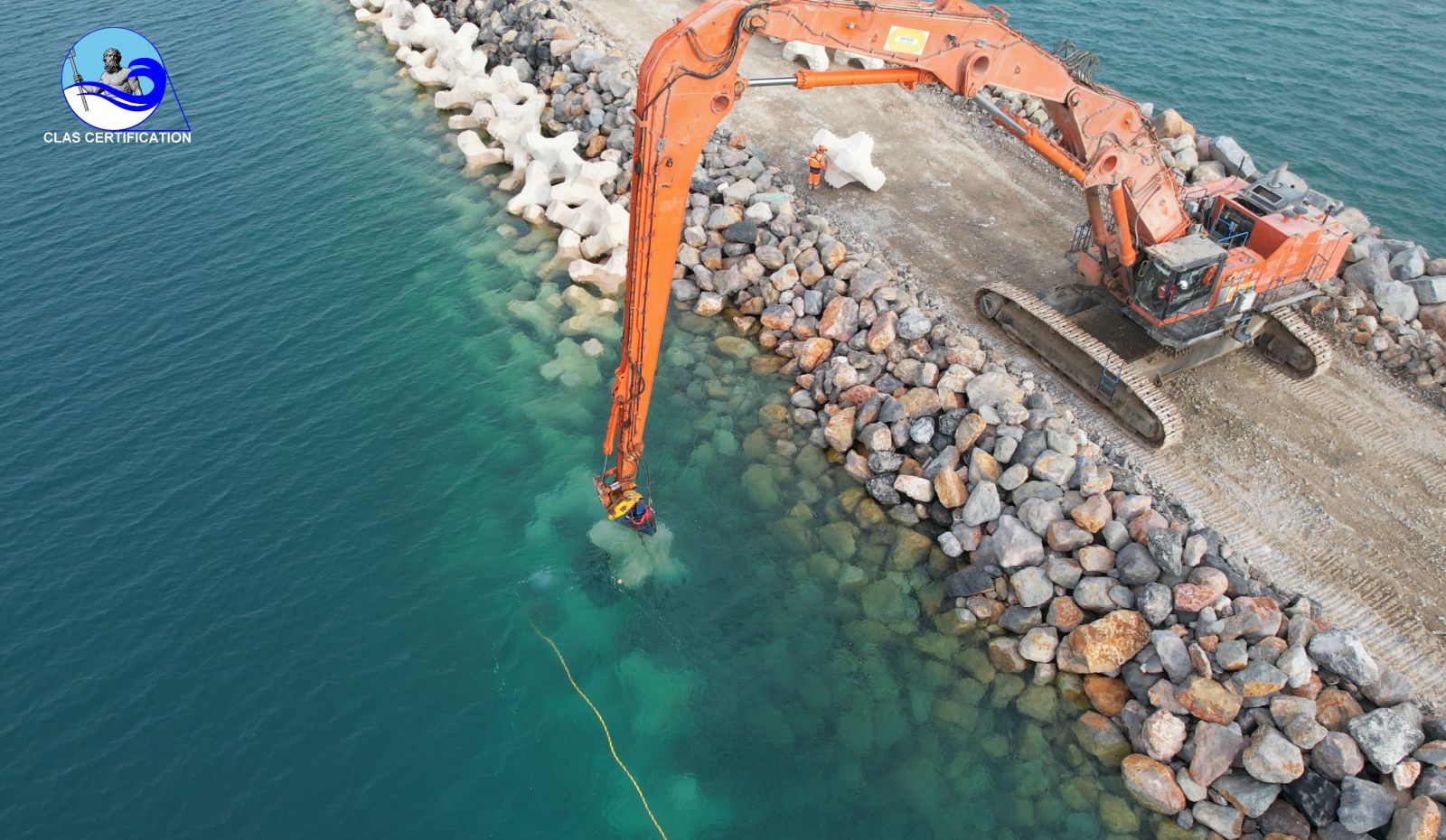

COMMENT FROM BOUYGUES FOLLOWING OUR INTERVENTION IN 2021
2022-2023 BASTIA DRAGON BREAKWATER FRANCE
The BUESA-NATALI group of companies called on CLAS's expertise to support it with the difficult project to rebuild the Dragon breakwater in BASTIA.
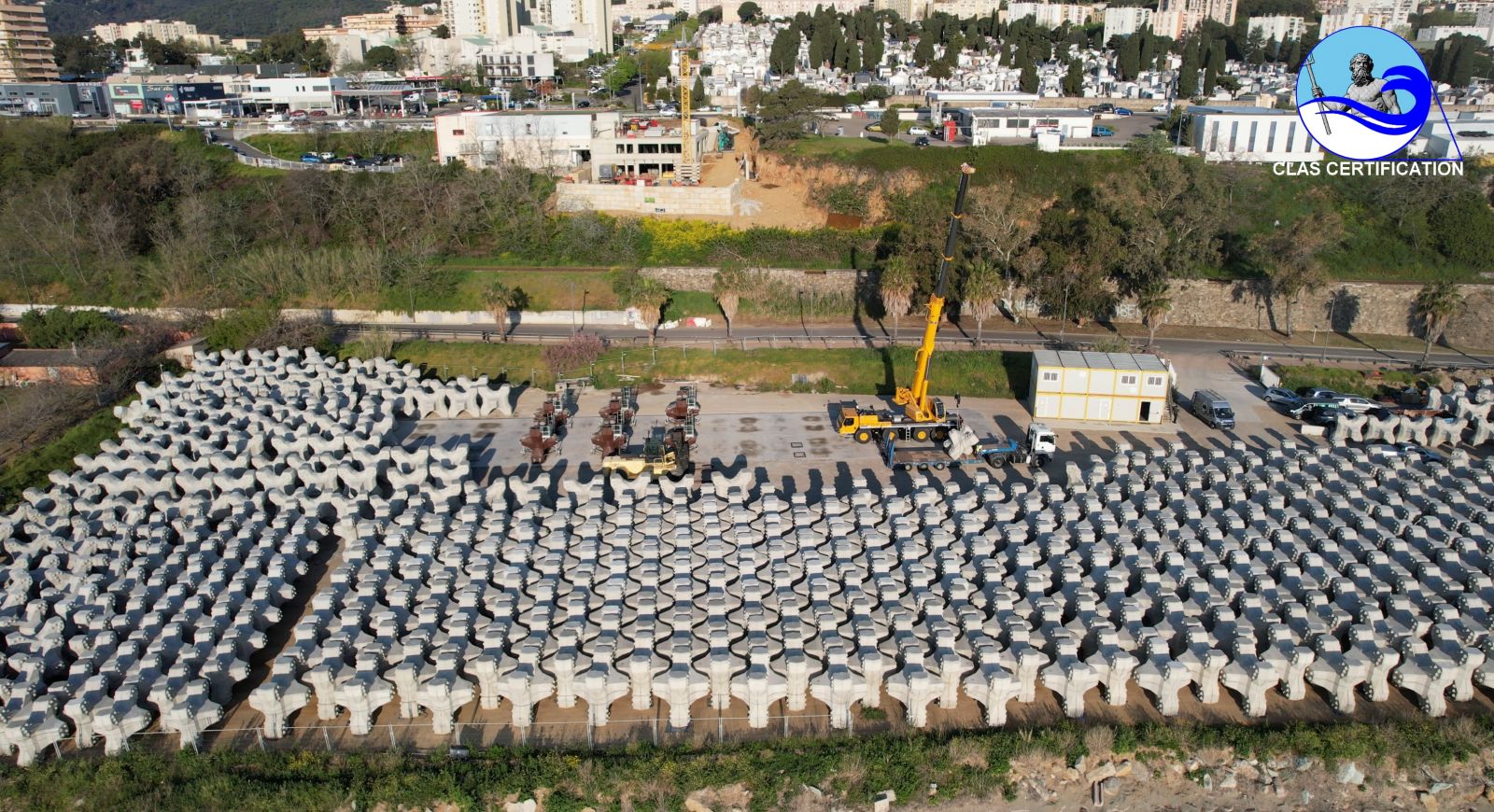
More than 800 ACCROPODE™II of 800 ACCROPODE™II of 9m3 constitute this armour.
We have trained and supported the installation teams and provide real-time monitoring of the quality of the work. We also received the mission to bring the production to its highest possible level. A CLAS inspector is present on this site full time.
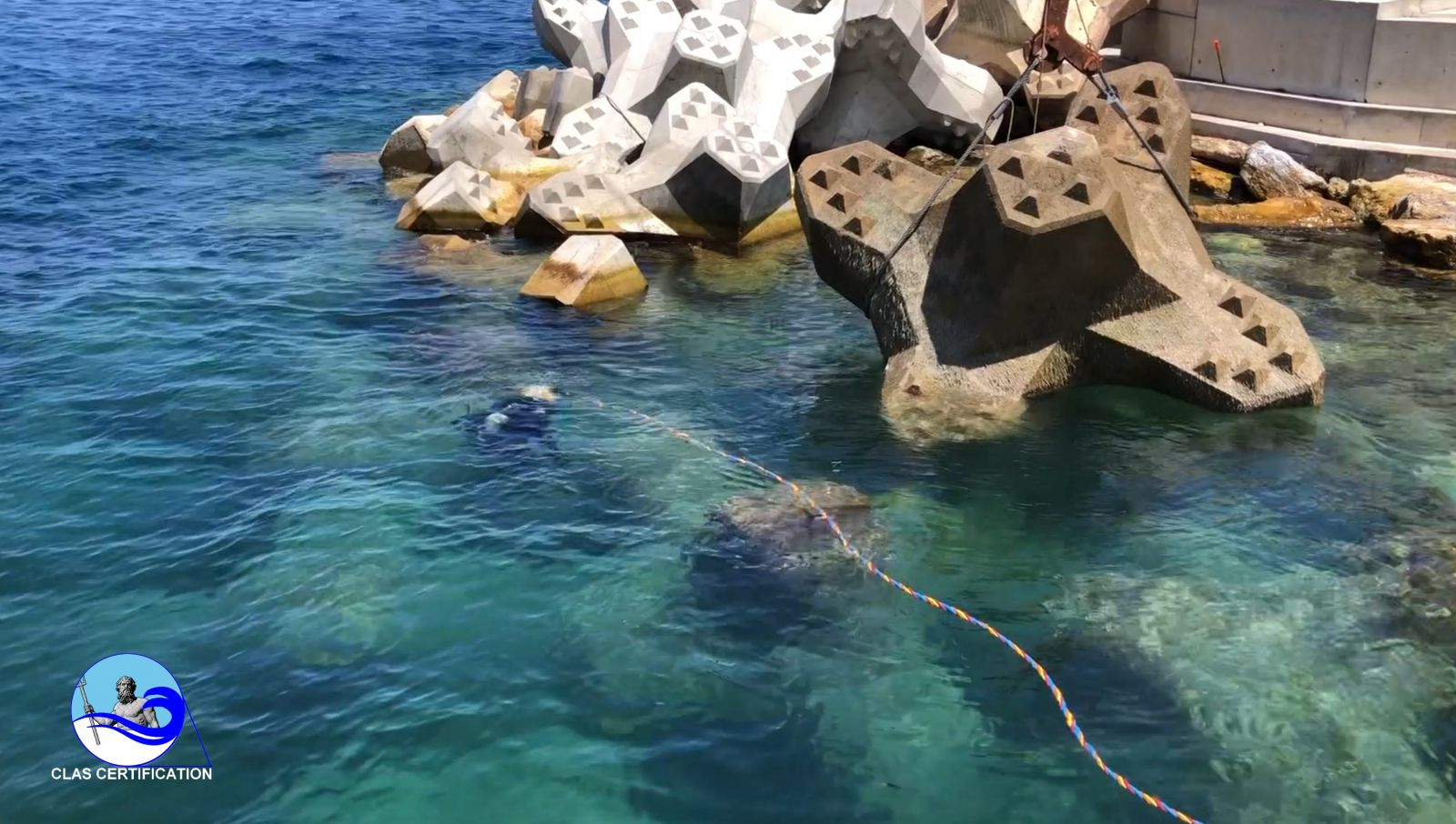

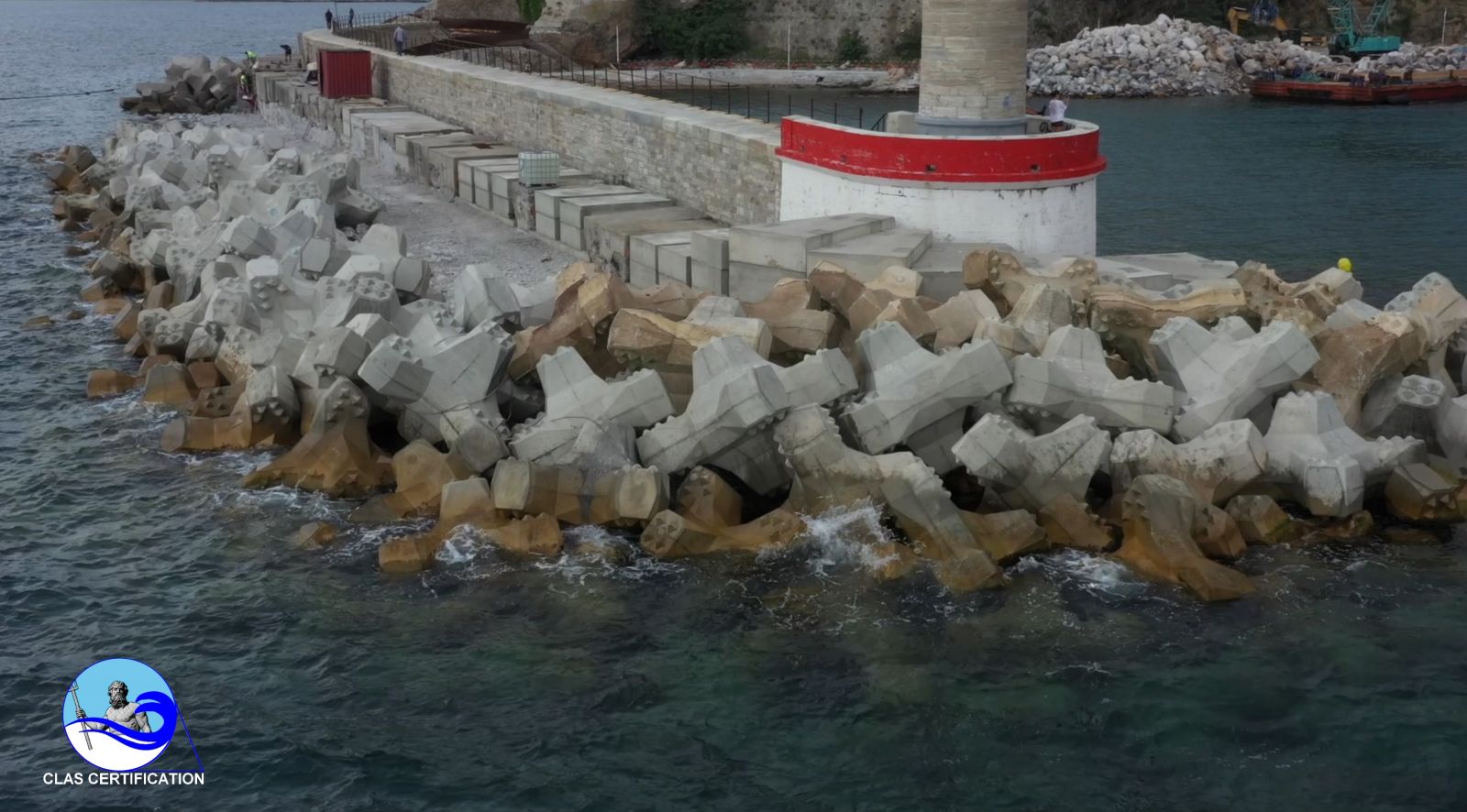
We are achieving thos project in June.
2023 PROTECTION OF THE POWER STATION EDF IN MARTIGUES FRANCE

800 ACCROPODE™II of 3 m3 had to be installed very quickly.
The BUESA-GUINTOLI group of companies called on the expertise of CLAS to carry out this complex project.
Two very important difficulties existed:
The pumping of cooling water from the thermal power plant could not be stopped, so as not to stop the production of electricity.
A concrete structure that protects the sea water intakes makes the installation of ACCROPODE™II very complicated.
To carry out this project in excellent safety conditions, we conducted a documentary study in our offices in Andorra to determine the best method for assessing and controlling the risks.
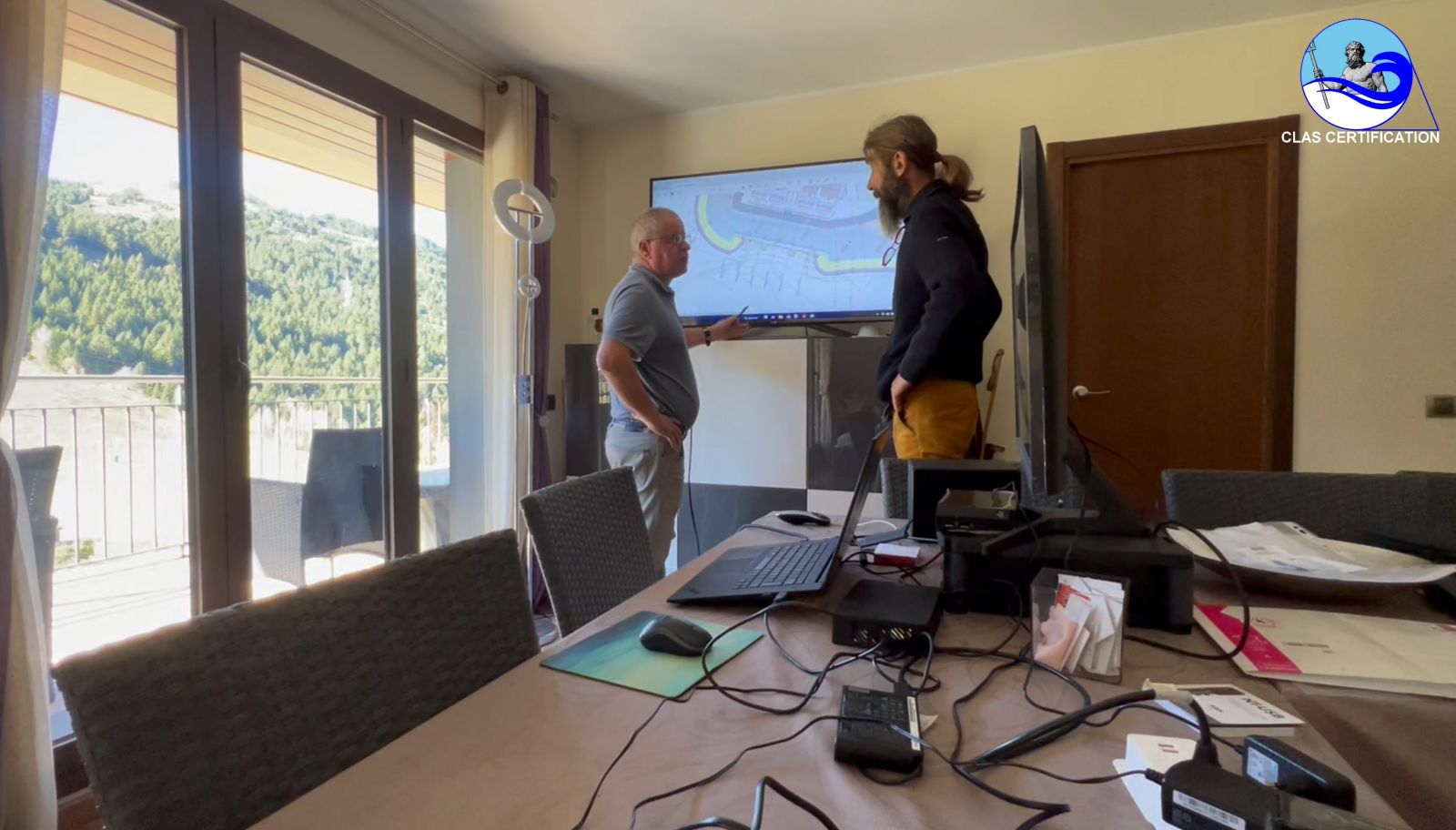
We then evaluated the suction power of the seawater pumps with our ROV BLUEROV 2, which proved to be particularly useful and efficient in accomplishing this mission.

When all the risks have been identified, assessed correctly and we have provided the right technical responses, we proceeded to train the personnel involved in the project: BUESA, GUINTOLI, EDF and CLI.
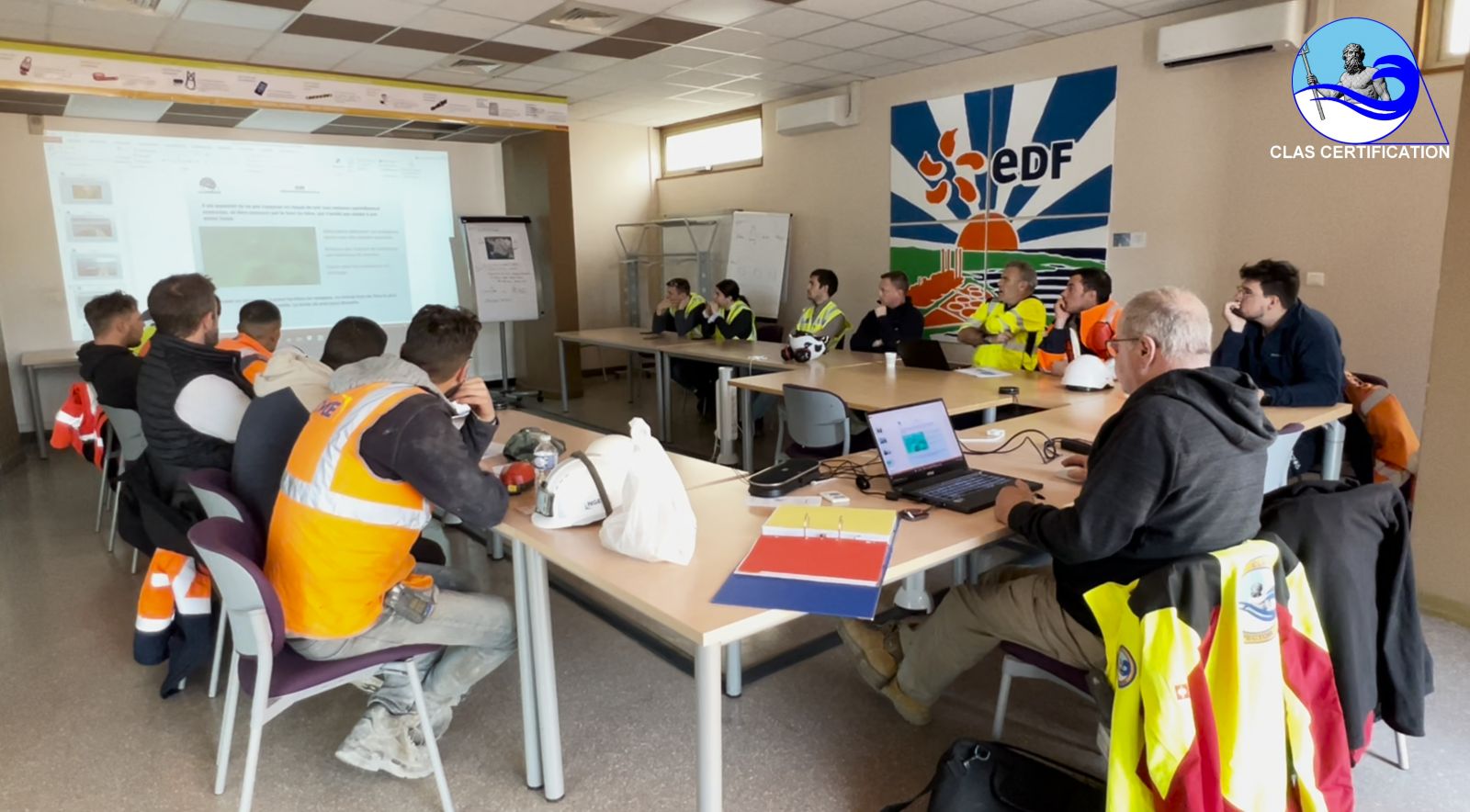
The construction of the armour was carried out quickly under water and on the slope out of water, by a team of specialists from the CLAS company who spared neither their time nor their efforts.
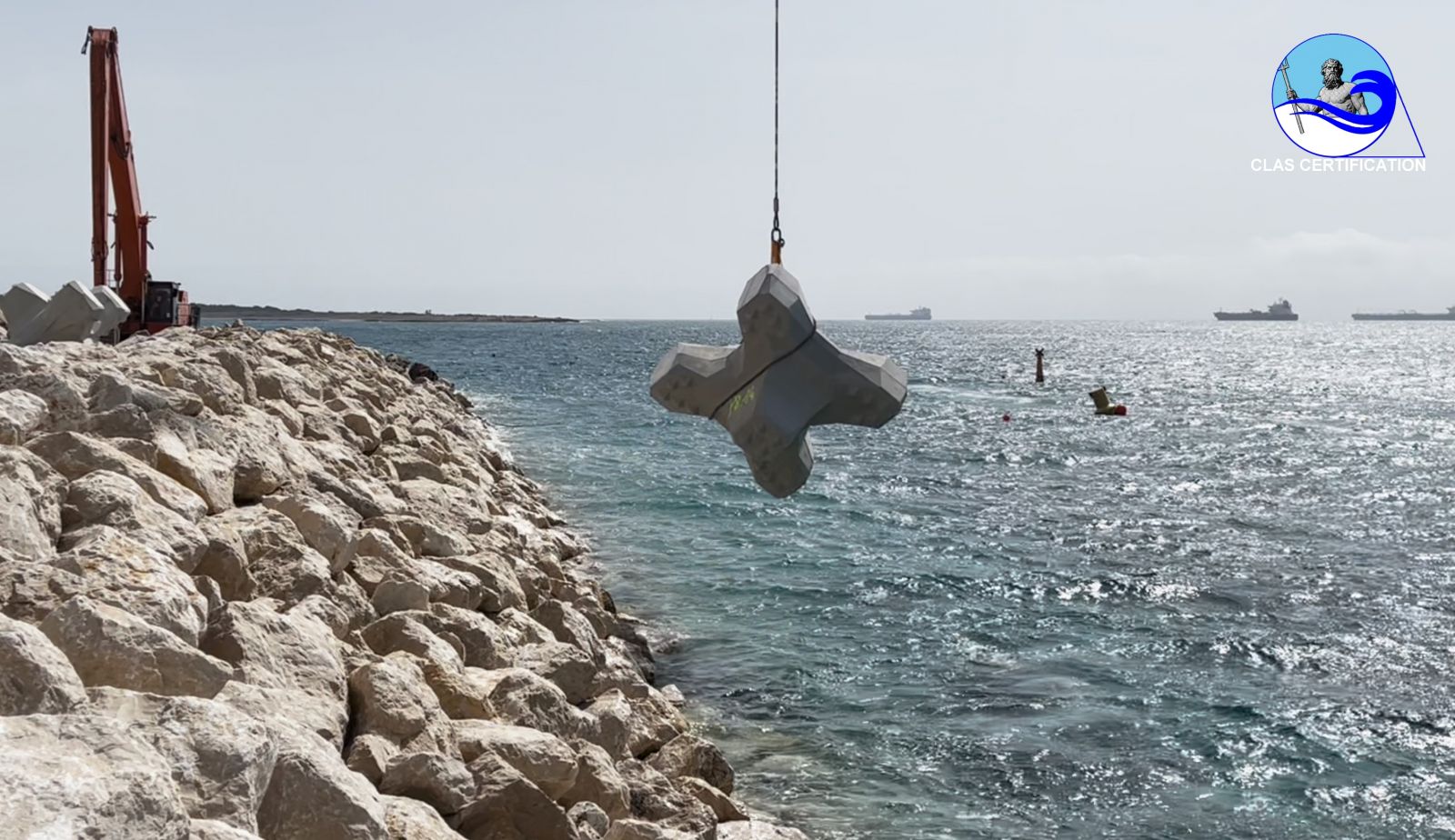


The work is interrupted during the summer, we will come back to lay the ridge blocks as soon as we are authorized to resume.
